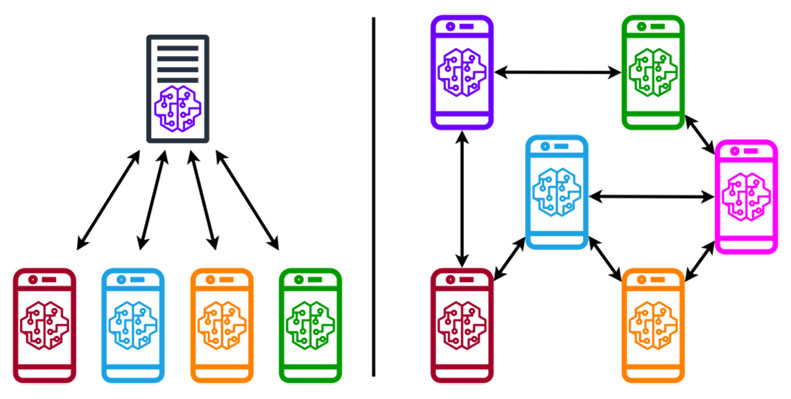Federated Learning
Table of Contents
Federated Learning is a machine learning approach that allows multiple devices to collaboratively train a shared model while keeping data locally on each device. In simpler terms, instead of sending all the data to a central server for training, Federated Learning allows the model to be trained on each device separately, and only the model updates are sent to the central server. This decentralized approach not only ensures data privacy but also reduces the need for large amounts of data to be sent over the network, saving time and resources.
How Does Federated Learning Work?
The process of Federated Learning can be broken down into a few key steps:
1. Initialization: The central server initializes a global model and sends it to all participating devices.
2. Training: Each device trains the model using its local data. The model is updated based on the data available on the device.
3. Aggregation: The updated models from each device are sent back to the central server, where they are aggregated to create a new global model.
4. Evaluation: The performance of the new global model is evaluated, and the process is repeated until the desired level of accuracy is achieved.

Advantages
Federated Learning offers several advantages over traditional machine learning approaches, including:
1. Privacy: With Federated Learning, data remains on the device and is not shared with a central server. This ensures data privacy and security, making it suitable for industries with strict data regulations.
2. Efficiency: By training models locally on each device, it reduces the need for data to be sent over the network, saving time and resources. This is especially beneficial for devices with limited bandwidth or computational power.
3. Scalability: Federated Learning can easily scale to a large number of devices, making it ideal for applications that involve a vast amount of data spread across multiple devices.
4. Personalization: Since models are trained locally on each device, Federated Learning allows for personalized recommendations and predictions tailored to individual users.
Applications
This technology has the potential to revolutionize many industries by enabling machine learning models to be trained on decentralized data sources. Some of the key applications of Federated Learning include:
1. Healthcare: Can be used to train models on patient data stored on different devices, enabling personalized treatment recommendations without compromising patient privacy.
2. Internet of Things (IoT): With the proliferation of IoT devices, it can be used to train models on data collected from sensors and devices, improving efficiency and reducing latency.
3. Financial Services: Federated Learning can help financial institutions analyze customer data securely and make personalized recommendations for investment strategies and financial products.
Challenges of Federated Learning
While Federated Learning offers many benefits, it also presents some challenges that need to be addressed:
1. Communication Overhead: Aggregating model updates from multiple devices can introduce communication overhead, especially in scenarios with a large number of devices.
2. Heterogeneity: Devices may have different hardware capabilities and data distributions, which can affect the performance of the global model.
3. Security: Ensuring the security and integrity of the model updates sent to the central server is crucial to prevent attacks and data breaches.
Despite these challenges, Federated Learning has the potential to transform the way machine learning models are trained and deployed.
By enabling collaborative learning on decentralized data sources, Federated Learning offers a privacy-preserving and efficient approach to machine learning that can benefit a wide range of industries.
As the technology continues to evolve, we can expect to see more applications of Federated Learning in real-world scenarios, driving innovation and unlocking new opportunities for businesses and consumers alike.




